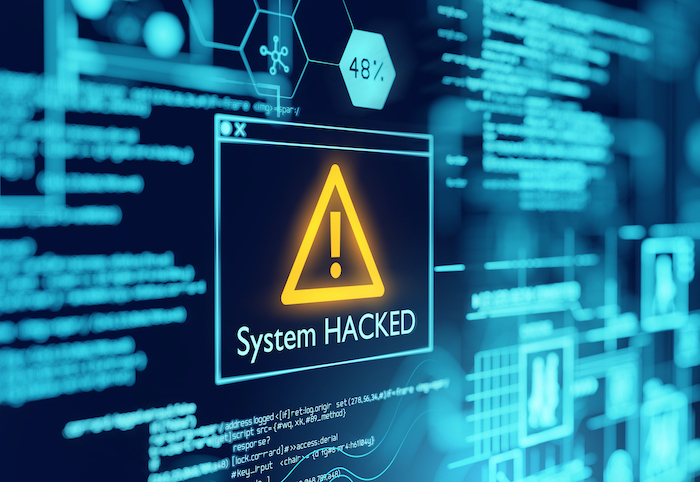According to the Hiscox Cyber Readiness Report 2022, cyberattacks represent the most significant risk to businesses operating in seven out of the eight countries involved in the poll. The threat of cyberattacks poses more of a risk to businesses than labor shortages, economic woes, and the COVID-19 pandemic. The report polled corporate cybersecurity professionals operating in the United States, United Kingdom, Spain, Belgium, France, Ireland, Germany, and The Netherlands. The report also stated businesses of all sizes operating in the United States experienced a seven percent increase in the number of cyberattacks over the previous 12 months.
For small and medium-sized businesses, the average cost of a cyberattack amounts to $108,000, while for companies with at least 1,000 employees, the average cost of responding to a cyberattack has increased to $1.41 million from $1.23 million the prior year. Although the rise in debilitating cyberattacks coincided with the transformation of the workforce from in-person to remote, businesses of all sizes report an increase in cyberattacks at IT infrastructures located in company offices and headquarters.
With the enhanced risk of cyberattacks, what is your business doing to confront the rapidly growing threat? The harsh reality is because technology is now entrenched in your operating model, you have to devise a resilient cybersecurity strategy for your organization. The question is not whether you should devise a cybersecurity strategy for your organization, but instead, how your organization should accomplish that goal.
What is a Cybersecurity Strategy and How Do You Build One?
When you think about a cybersecurity strategy, you probably think about specific ways to prevent hackers from gaining access to sensitive data. However, a cybersecurity strategy is more about the steps it takes to secure your organization’s digital assets over the next several years. This means taking a proactive approach to cybersecurity that first recognizes the threats before deciding how to prevent them from damaging your organization.
Gain a Clear Understanding of Every Cyber Threat
What types of cyberattacks does your organization face? Different types of cyberattacks threaten different organizations. For example, a national restaurant chain should be more concerned about cybercriminals gaining access to customer financial data such as credit card information. On the other hand, an IT firm should spend more time and resources identifying malware threats. One effective way to gain a clear understanding of every cyber threat is to determine whether your competitors have suffered recent cyberattacks and if they have, discover the types of attacks they have experienced.
Another important aspect of understanding the cyberattacks that can undermine your organization involves predicting the type of cyberattacks your organization might face in the future. This is a critically important role for the CIO to fill or the employee of your business who is responsible for IT issues.
Assess Your Organization’s Cybersecurity Capabilities
Once you discover what your organization is up against, you can complete an assessment that describes the strength of your cybersecurity capabilities. Does your IT infrastructure have virus and malware detection tools installed to prevent cyberattacks? Have you implemented a two-factor authentication (2FA) system to prevent the theft of passwords? Do you have a formal plan in place to delete the data associated with all recently departed employees? What is the current state of your cybersecurity when it comes to denial-of-service attacks?
If your organization continues to support some form of a remote workplace, do your employees have the digital tools to thwart cyberattacks at home? Despite the slow move back to the office, many companies have decided that a hybrid workplace increases productivity.
Take Steps to Improve Your Cybersecurity Program
Now we have reached the stage where the CIO or the employee responsible for IT issues recommends specific approaches to strengthen your organization’s cybersecurity program. Your business must adopt cybersecurity protocols that prevent costly data breaches and other types of cybersecurity intrusions. The key is to balance the costs associated with bolstering your cybersecurity program with the limited financial resources your company has to make the appropriate changes. You should prioritize cybersecurity tools and applications according to the most significant cybersecurity breaches your organization faces.
Document Everything
After you implement your new cybersecurity program, thoroughly document its performance. This includes documenting policies, guidelines, procedures, and risk assessments. For example, you should document the policy that pertains to handling an employee who failed to follow the correct cybersecurity protocols. Make sure you ask for feedback from the team members that are the most involved with cybersecurity issues.
Receiving feedback helps you continue to build a resilient cybersecurity strategy for your organization.
The Bottom Line: Cybersecurity is More Critical Than Ever
One thing is certain concerning cybersecurity: The more sophisticated the tools and applications, the more sophisticated cybercriminals become. This means you cannot afford to implement a cybersecurity strategy and then focus your attention on other matters.
Cybersecurity should be an issue that receives close scrutiny every day by every member of your organization.
Additional Cybersecurity Resources
Endpoint Security: What it is and Why it’s Important




0 Comments